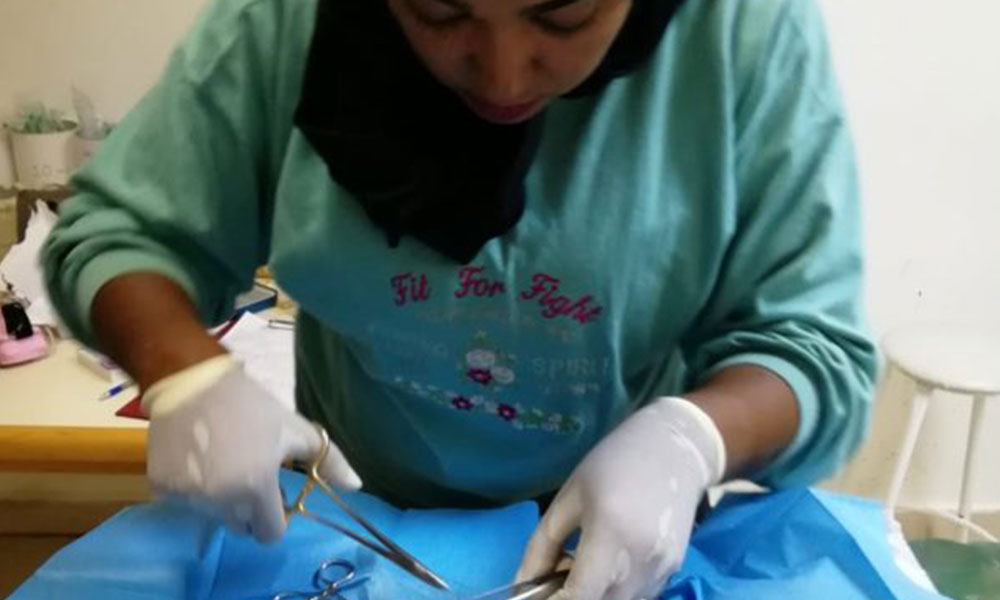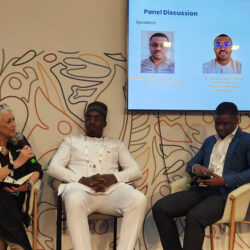My Training in Jordan
-

- by Nujuum (Neju) Jimi December 28, 2018

As part of CCF’s efforts to build veterinary capacity in Somaliland, it entered into a collaboration with two European universities and Veterinarires sans Frontieres Czech Republic (VSF-cz). This collaboration provided me with an opportunity to travel to Jordan for a 3-week training under the supervision of Dr Zain Shaheen of the Princess Alia Foundation and sponsored by VSF-cz with CCF’s support.
I arrived at Queen Alia airport on 28 November. Dr. Zain took me to the main office of the New Hope Center, established by the Princess Alia Foundation and Four Paws, to provide emergency medical treatment, rehabilitation and re-homing for animals in appropriate sanctuaries. At the Center, she introduced me to the staff, and afterwards took me to an area where they keep many different animals. She introduced me to the Animals Keeper and to Dr. Raghad, who treated me as a sister and like one of their staff members.
After the introductions, Dr. Raghad took me around to show me the animals kept at their facility and explained to me why they are kept there. She also explained how they are fed, how they manage them and what is their future plan for all the animals kept there.
Among the animals kept there, I got a chance to see bears, pythons, raptors, a lion cub, wolves, vervet monkeys, native turtles and baboons.
After a short explanation of the animals’ history and hands-on experience on standard daily operations, we went to another facility located on a very large property, where they keep predators like native striped hyenas, African spotted hyena, native raptors, some other confiscated raptors, native wolves, Syrian wolves, some hybrids of wolf and husky and some vervet monkeys.
The enclosures are well built and managed to keep predators safe and additionally, big enough for the animals to express their wild behavior like running, playing, hiding if they want to, digging holes and a separate room to keep them from cold weather and rain. All animals had different origins and stories except for the native animals.
The enclosures were designed with safety in mind and are surrounded by electric wires which provide extra protection to prevent the animals from escaping and to keep keepers safe.
Before the feeding, the animal keepers check all the animals, observing their behavior so they can detect any health issues. In addition, they check around the fences to make sure there are no holes underneath and that the electric wires are working properly. After they finish checking, they go back to the main office and meet to discuss everything they observed in the center and if there are any animals that need medical attention or anything else. Shortly afterwards, they prepare the food, put some enrichment in the enclosure and feed the animals.

On the 29 November I assisted Dr. Raghad with the extraction of a tumor around the perianal area of a wolf. First, we started the procedure by darting the wolf, Zolitile, and then we administered ketamine for anesthesia. After a while, we began the surgery by extracting the tumor carefully and fortunately the surgery went perfectly and ended with success.
On the next 6 days, we preformed ovariohysterectomies on four stray cats and all went smoothly.
On 2 December, they took me to the biggest wildlife sanctuary in the Middle East called Al Ma”wa of the Princess Alia Foundation. Dr. Raghad introduced me to all the management and animals keepers. As at the other place, they started their day by checking the electrified fences and counting the animals in the enclosures; currently they have around 17 lions and two tigers. They also have two Syrian wolves and four brown bears, all of which were there for different reasons. Routinely, they feed the lions and tigers 3 times a week and more interesting is that the 3 other days, they hand feed them to encourage normal behavior around the animal keepers. Also, another reason for the hand feeding is to observe the animals closely and check whether any medication needs to be administered and, in this way, it will make the procedure easy. The most important thing I observed and learnt in the sanctuary was the teamwork and how they managed the sanctuary in an organized manner.
Overall, this visit was a great learning opportunity and an unforgettable experience for me, especially because of all the beautiful people with a big heart I met there.
Related Reading
-
September 2, 2025
A New Way to Follow the Fastest Cat on Earth -
September 27, 2024
Representing the Cheetah at the AZA Conference




